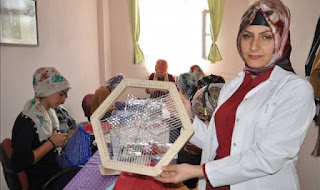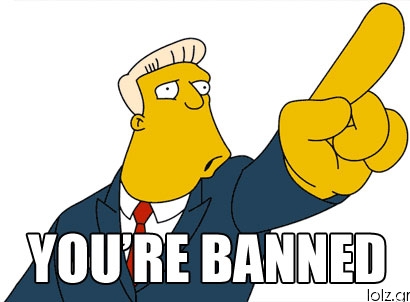Summary procedure for contempt proceedings permissible: Supreme Court
In a recently reported decision [AIR 2010 SC 862], the Supreme Court has declared that summary procedure can be adopted to determine contempt proceedings against a person and even though a procedure has been prescribed under Section 14 of the Contempt of Courts Act, 1971
 , yet the same can be dispensed in exceptional circumstances. The Court was dealing with the contempt charges on a lady who had throw a shoe at the Supreme Court judge during the course of hearing in full public view and in these circumstances, it was declared that the entire procedure under the Act could be dispensed, being redundant, and summary procedure could be adopted as a punishment for contempts.
, yet the same can be dispensed in exceptional circumstances. The Court was dealing with the contempt charges on a lady who had throw a shoe at the Supreme Court judge during the course of hearing in full public view and in these circumstances, it was declared that the entire procedure under the Act could be dispensed, being redundant, and summary procedure could be adopted as a punishment for contempts.
The background facts leading to the present decision were noted in the decision as under;
3. ... The order recorded by Dr. Justice Pasayat indicates that one of the petitioners had gone to the extent of saying that the Judges should be jailed for having initiated proceedings against them and that the Judges should be punished for not taking care of their fundamental rights. One of the writ petitioners, namely, Dr. Sarita Parikh, went to the extent of throwing a footwear at the Judges. His Lordship also recorded that all this happened in the presence of the learned Solicitor General of India (now Attorney General for India), two learned Additional Solicitor Generals and a large number of learned counsel and advocates, including the President of the Supreme Court Advocates-on-Record Association. Having recorded the said incidents which had occurred within the sight of the Hon’ble Judges and the other persons present in Court, Dr. Justice Pasayat held such behaviour to be contemptuous in the face of the Court. Since the petitioners stood by what they had said and done in court, His Lordship felt that there was no need to issue any notice and holding them to be guilty of criminal contempt of this Court, inflicted a punishment of three months’ simple imprisonment on them.
4. The said course of action did not meet the approval of the other learned Judge, the Hon’ble Mr. Justice Asok Kumar Ganguly, who by a separate order of even date, observed that the writ petitioners could not have been punished for contempt without due compliance with the provisions of Section 14(1)(a)(b)(c) and (d) of the Contempt of Courts Act, 1971. His Lordship was also of the view that the Court’s power under Article 142 was not meant to circumvent the statutory requirements. His Lordship, accordingly, observed as follows :
“Therefore, in this view of the matter, I cannot agree with the view expressed in the order of His Lordship Justice Pasayat, for sending the alleged contemnors to prison for allegedly committing the contempt in the face of the Court without following the mandate of the Statute under Section 14. I, therefore, cannot at all agree with His Lordship’s order by which sentence has been imposed. I am of the view that the liberty of those persons cannot be affected in this manner without proceeding against them under Section 14 of the Act. In my opinion Section 14 is in consonance with a person’s fundamental right under Article 21.”
5. Having regard to the difference of opinion as to the procedure to be adopted before the petitioners could be found guilty of contempt of Court and sentenced, the matter was directed to be placed before Hon’ble The Chief Justice of India and a direction was given that the contemnors would remain in custody till the matter could be heard by an appropriate Bench.
In this background, the Bench declared the law as under;
17. As far as the suo motu proceedings for contempt are concerned, we are of the view that Dr. Justice Arijit Pasayat was well within his jurisdiction in passing a summary order, having regard to the provisions of Articles 129 and 142 of the Constitution of India. Although, Section 14 of the Contempt of Courts Act, 1971, lays down the procedure to be followed in cases of criminal contempt in the face of the court, it does not preclude the court from taking recourse to summary proceedings when a deliberate and wilful contumacious incident takes place in front of their eyes and the public at large, including Senior Law Officers, such as the Attorney General for India who was then the Solicitor General of India. While, as pointed out by Mr. Justice Ganguly, it is a statutory requirement and a salutary principle that a person should not be condemned unheard, particularly in a case relating to contempt of Court involving a summary procedure, and should be given an opportunity of showing cause against the action proposed to be taken against him/her, there are exceptional circumstances in which such a procedure may be discarded as being redundant. The incident which took place in the court room presided over by Dr. Justice Pasayat was within the confines of the court room and was witnessed by a large number of people and the throwing of the footwear was also admitted by Dr. Sarita Parikh, who without expressing any regret for her conduct stood by what she had done and was supported by the other contemnors. In the light of such admission, the summary procedure followed by Dr. Justice Pasayat cannot be faulted.
18. Section 14 of the Contempt of Courts Act, 1971, deals with contempt in the face of the Supreme Court or the High Court. The expression “Contempt in the face of the Supreme Court” has been interpreted to mean an incident taking place within the sight of the learned Judges and others present at the time of the incident, who had witnessed such incident. In re: Nand Lal Balwani [(1999) 2 SCC 743], it was held that where an Advocate shouted slogans and hurled a shoe towards the Court causing interference with judicial proceedings and did not even tender an apology, he would be liable for contempt in the face of the Court. It was observed by the Bench of three Judges which heard the matter that law does not give a lawyer, unsatisfied with the result of any litigation, licence to permit himself the liberty of causing disrespect to the Court or attempting, in any manner, to lower the dignity of the Court. It was also observed that Courts could not be intimidated into passing favourable orders. Consequently, on account of his contumacious conduct, this Court sentenced the contemnor to suffer four months simple imprisonment and to pay a fine of Rs.2,000/-. In another decision of this Court in Charan Lal Sahu v. Union of India and another [(1988) 3 SCC 255], a petition filed by an experienced advocate of this Court by way of a public interest litigation was couched in unsavoury language and an intentional attempt was made to indulge in mudslinging against the advocates, the Supreme Court and other constitutional institutions. Many of the allegations made by him were likely to lower the prestige of the Supreme Court. It was also alleged that the Supreme Court had become a constitutional liability without having control over the illegal acts of the Government. This Court held that the pleadings in the writ petition gave the impression that they were clearly intended to denigrate the Supreme Court in the esteem of the people of India. In the facts of the case, the petitioner therein was prima facie held to be guilty of contempt of Court.
19. Section 14 of the Contempt of Courts Act no doubt contemplates issuance of notice and an opportunity to the contemnors to answer the charges in the notice to satisfy the principles of natural justice. However, where an incident of the instant nature takes place within the presence and sight of the learned Judges, the same amounts to contempt in the face of the Court and is required to be dealt with at the time of the incident itself. This is necessary for the dignity and majesty of the Courts to be maintained. When an object, such as a footwear, is thrown at the Presiding Officer in a Court proceeding, the object is not to merely scandalize or humiliate the Judge, but to scandalize the institution itself and thereby lower its dignity in the eyes of the public. In the instant case, after being given an opportunity to explain their conduct, not only have the contemnors shown no remorse for their unseemly behaviour, but they have gone even further by filing a fresh writ petition in which apart from repeating the scandalous remarks made earlier, certain new dimensions in the use of unseemly and intemperate language have been resorted to to further denigrate and scandalize and over-awe the Court. This is one of such cases where no leniency can be shown as the contemnors have taken the liberal attitude shown to them by the Court as licence for indulging in indecorous behaviour and making scandalous allegations not only against the judiciary, but those holding the highest positions in the country. The writ proceedings have been taken in gross abuse of the process of Court, with the deliberate and wilful intention of lowering the image and dignity not only of the Court and the judiciary, but to vilify the highest constitutional functionaries.
20. In such circumstances, while agreeing with the procedure adopted by Dr. Justice Pasayat in the facts of this case, we are not inclined to interfere with the sentence which has been imposed on the contemnors.


Yorumlar
Yorum Gönder